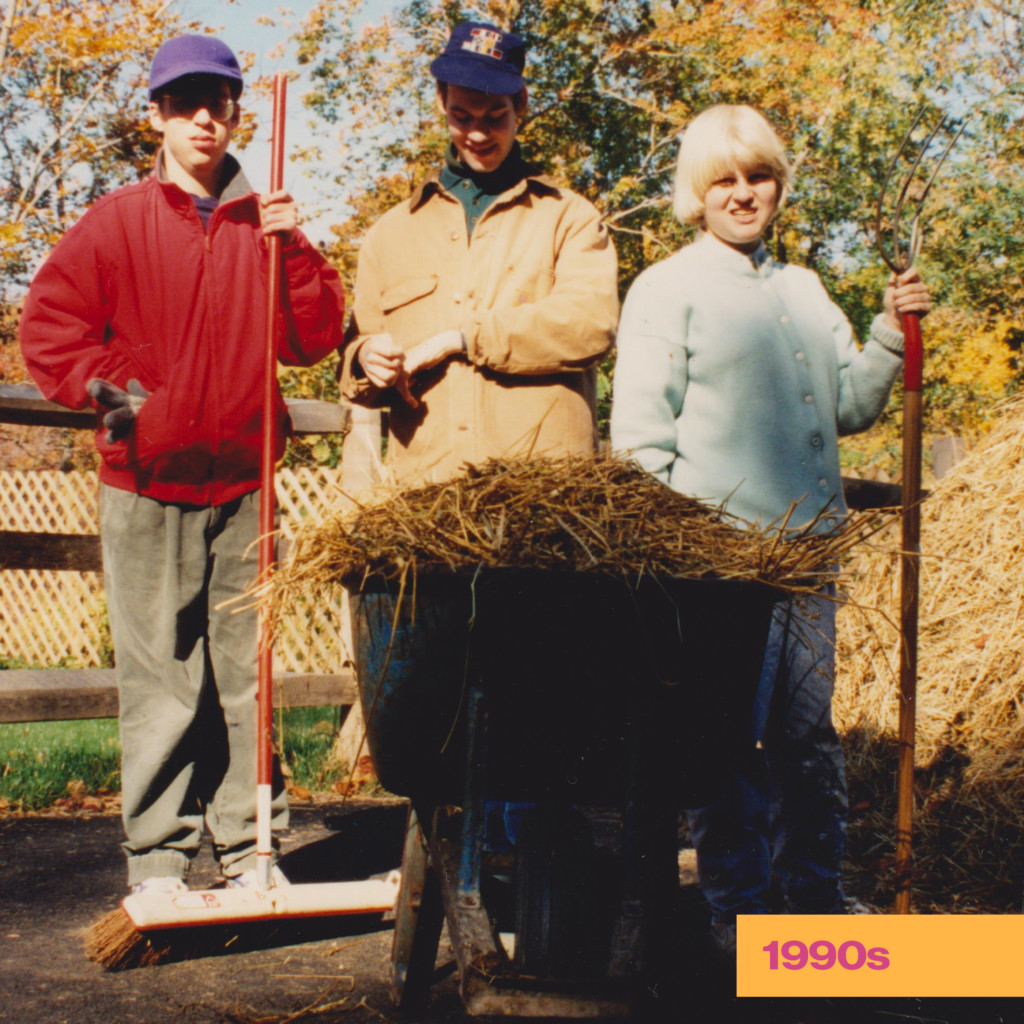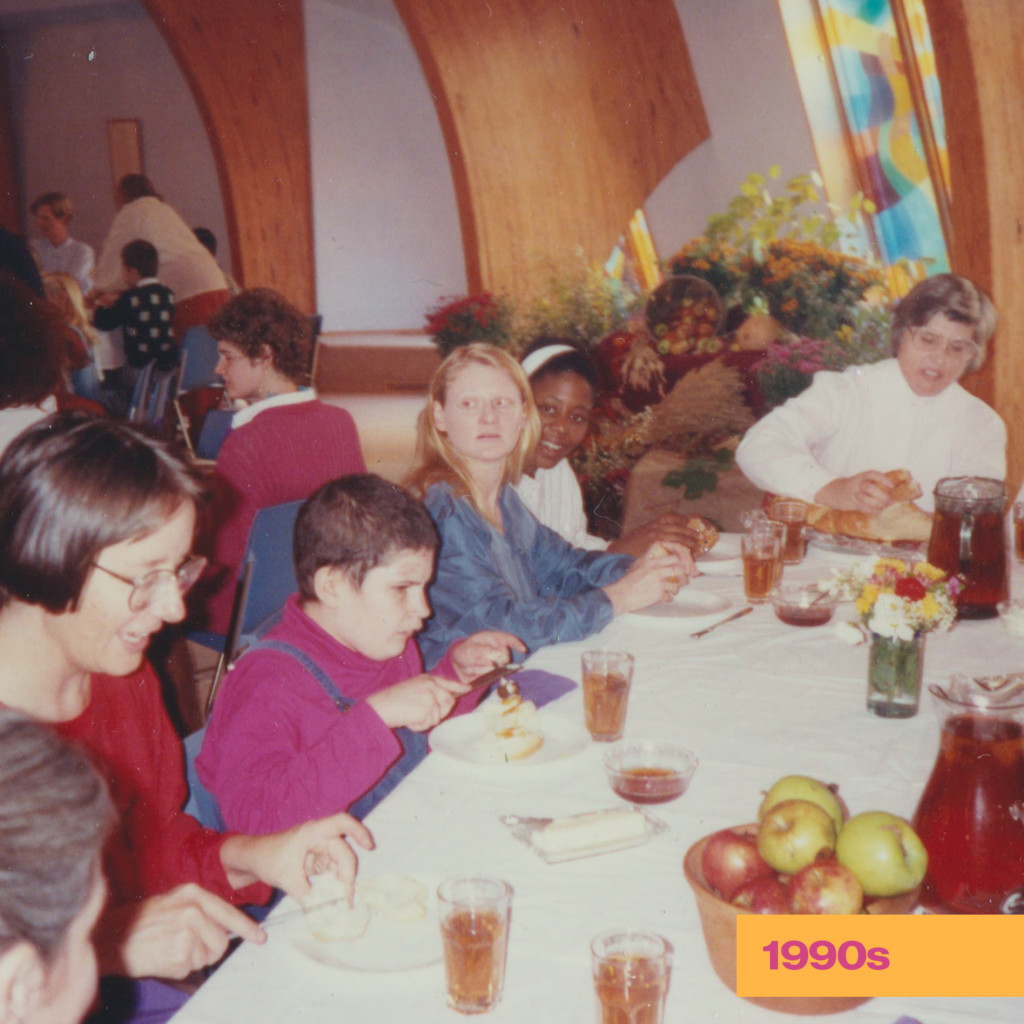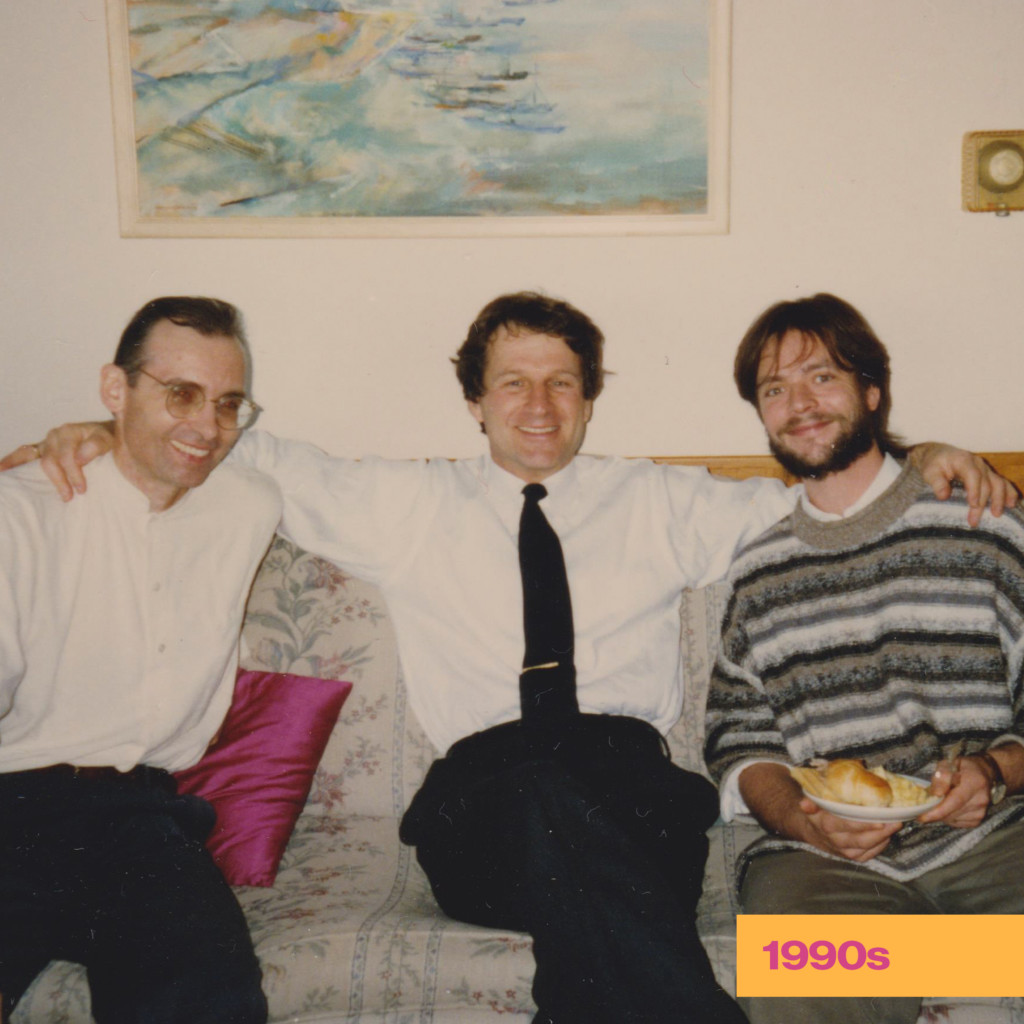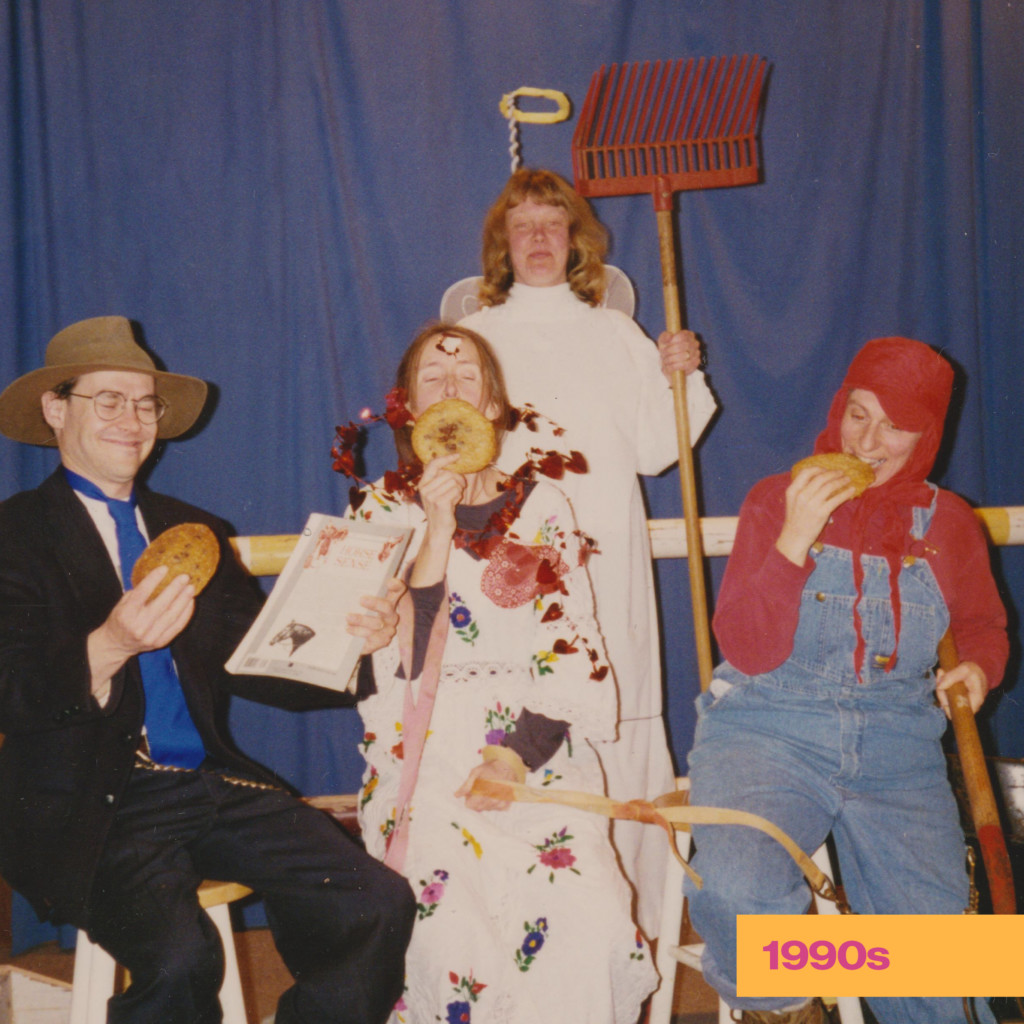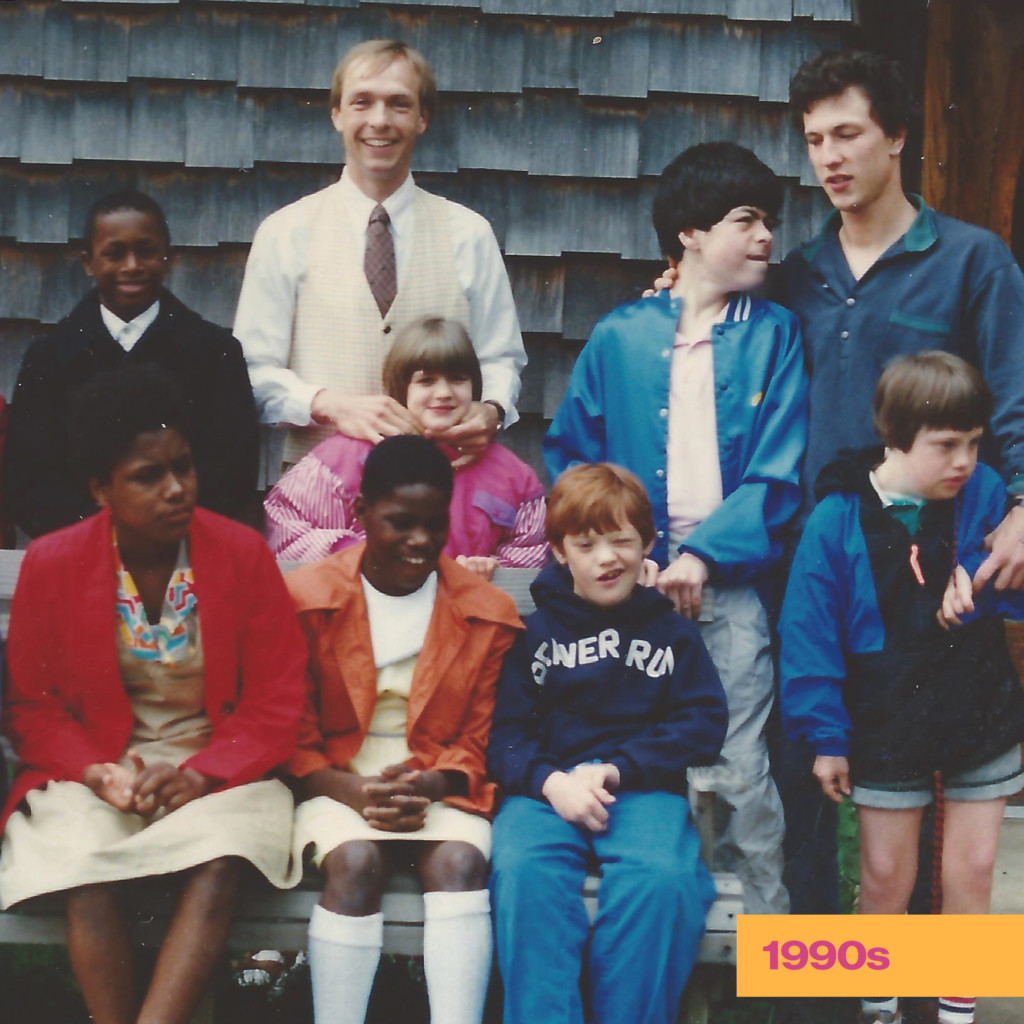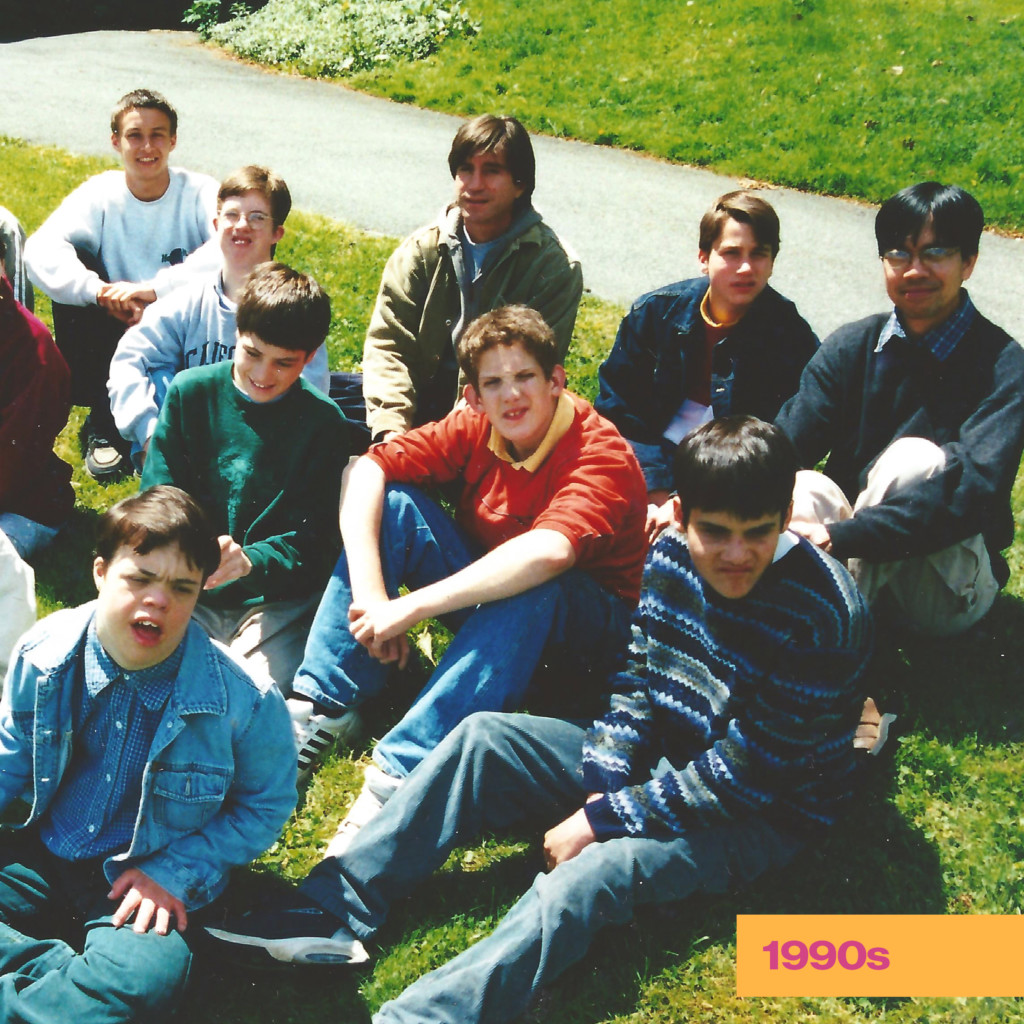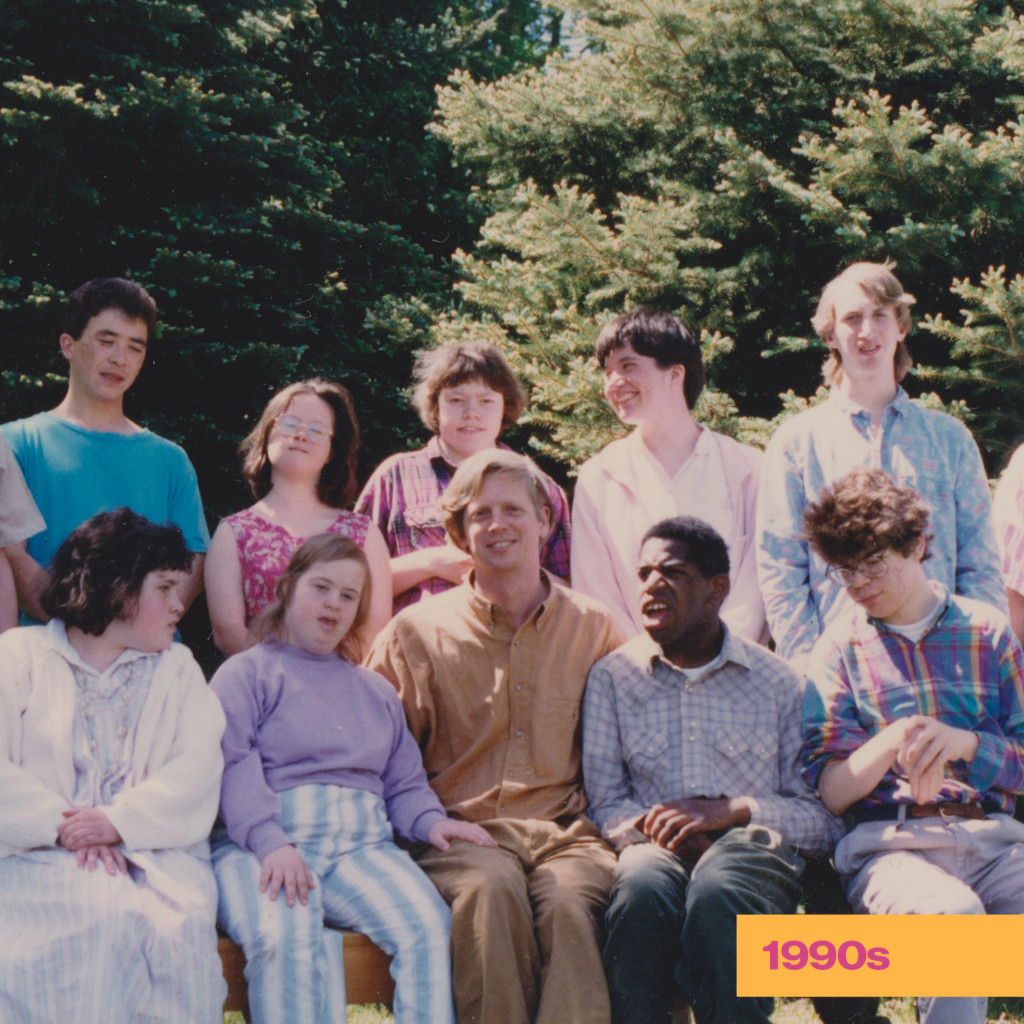The Camphill School History – 1990s

Many of The Camphill School faces you know now arrived at the community in the 90s. Guy, Sonja, Carsten, Sarah, Andrea… and the list goes on. Individuals who shaped what our community is today and continue to work tirelessly to make this place a home for so many.
Claus Sproll described this period of time in the book The History of Beaver Run.
These years after the first “generation” (the period covered by this history) are crucial and have seen the community mature through major changes. We’ve gone from three employed people to forty-five, from a school with a small group of teachers to a school organism that encompasses class teachers, aids, therapists, medical support, and more. We have had to work with more regulations, more documentation, and more training. The need to clarify the changes and maintain the “Children’s Village”—without becoming more institutionalized as a “special school”—has become ever more critical. A number of new people joined at the beginning of the ‘90s, and this group has stayed virtually unchanged.
One of those individuals was Guy Alma, now our Director of Development. Here is a description of what he encountered when he arrived.
I first arrived in Beaver Run in September 1990, on the day before the fall term was due to begin. I was twenty-four years old and was taking a break from a career in retail management. The community I arrived in was quite small, with only nine children’s houses and fifty-five children or so. My first impressions were of a very unusual place, laden with magic, free enterprise, philosophical pursuit, and a degree of spiritual dogma. I loved the children and my house community from the first day on but couldn’t settle into a culture that was so different from the one I had come from in London.
My own sense of dislocation was not the only experience of disorientation that year: the enrollment of students at Beaver Run was slowly but steadily declining, and the long-term members of the community were wrestling with the issues this presented. Was there a future for Beaver Run? Was the community still needed? A marketing firm was hired (for $50,000; a huge sum!) to try to help the community recruit more children. Whilst the marketing strategy failed, the children did begin to come from other sources. Thus, a true community phenomenon revealed itself: if there is a common will for future work, providence can begin to provide the ingredients needed for that work to begin. This principle has been so evident in my years here that it has become an irrefutable principle for me.
A community is a reflection of its people. The Camphill School community is all so lucky to be called home to so many incredible individuals who continue to dedicate their lives to creating a better future.
